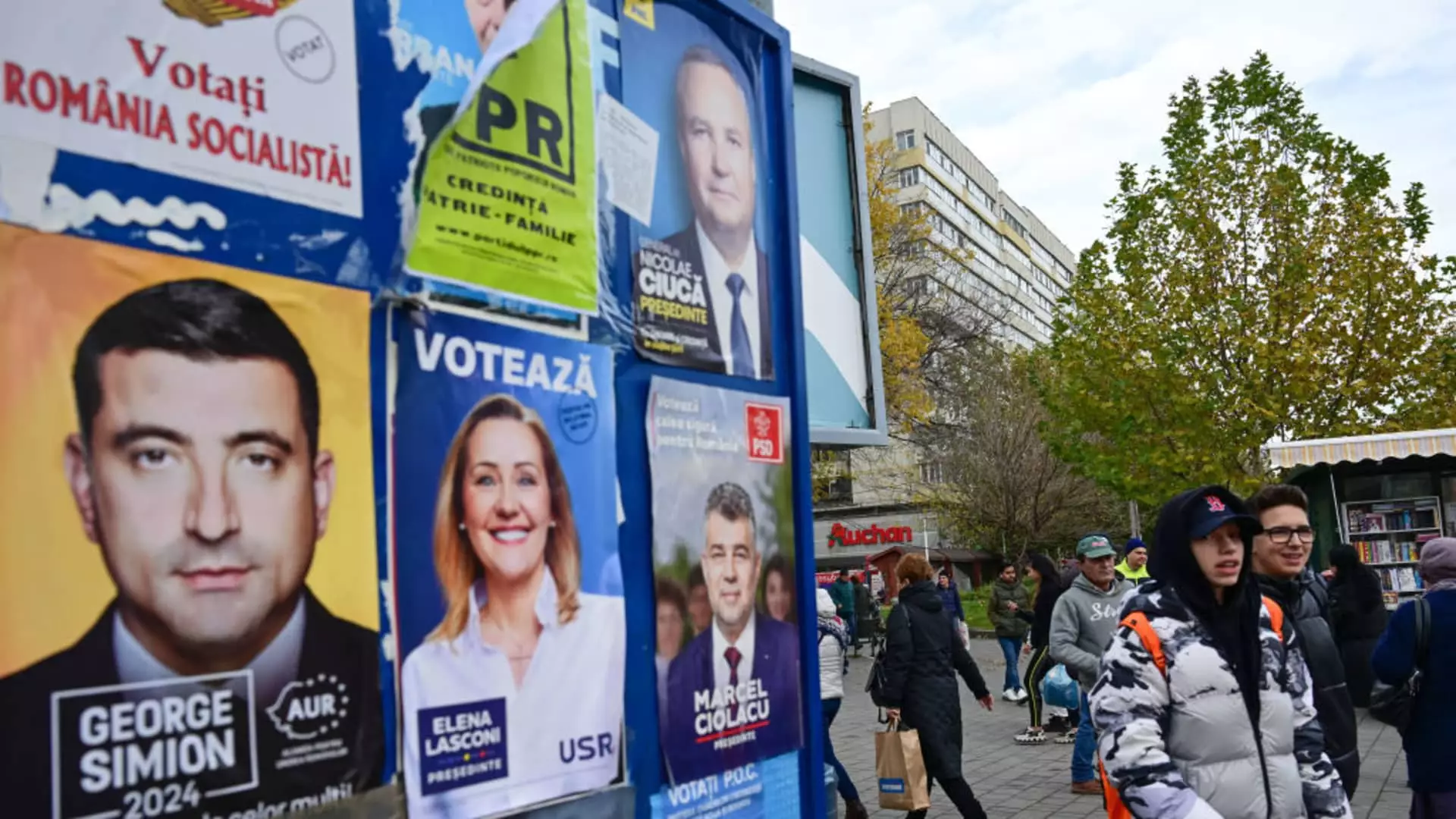Romania’s recent presidential election illuminated a surprisingly fragmented political landscape that raises new questions about the country’s future. Calin Georgescu, an independent candidate representing far-right ideologies and a pro-Russia stance, emerged as a frontrunner with 22.94% of the initial vote count. This success was particularly surprising given that prior polls had predicted he would struggle to reach double digits. His unexpected lead over more conventional candidates signifies a potential shift toward ultranationalism in Romanian politics. The implications of such a shift could extend far beyond the election itself, possibly reflecting a dissatisfaction among the electorate with the current political establishment and its alignment with Western interests.
As the race heads toward the December 8 runoff, the spotlight will certainly be on Georgescu and his opponent, Elena Lasconi, who secured 19.17% of the vote. Lasconi, a pro-NATO candidate and leader of the opposition’s Union Save Romania (USR), supports military aid for Ukraine and advocates for reforms steeped in anti-corruption and modernization. This stark ideological contrast between Georgescu and Lasconi shapes a pivotal narrative of the election. Georgescu’s ultranationalist agenda, which staunchly opposes military support for Ukraine, resonates with a segment of voters disillusioned by ongoing geopolitical tensions and the implications for national sovereignty. Conversely, Lasconi’s platform appeals to those seeking stability and alignment with European values.
The results also mark a troubling moment for Romania’s Social Democratic Party (PSD), which has guided the country for decades. Marcel Ciolacu, the party leader and current prime minister, found himself just shy of securing a place in the runoff, garnering a mere 19.16%. For the first time since the fall of communism in 1989, the PSD will not participate in the presidential runoff, highlighting a possible erosion of its traditional voter base. The rise of candidates like Georgescu and Lasconi, therefore, underscores a potential reconfiguration of the political spectrum that could leave the PSD scrambling to redefine its identity and purpose in a rapidly changing political environment.
At 52.55%, voter turnout was modest, yet significant enough to suggest an engaged electorate pondering the implications of their choices. The participation mirrors a growing concern amongst citizens over national issues that resonate with their everyday lives. The fragmentation of votes among various candidates—ranging from the far-right AUR leader, George Simion, to the centrist Nicolae Ciuca—suggests that Romanian society is deeply polarized.
As the date for the runoff approaches, it remains to be seen how public sentiment will evolve. Will Romania continue its pivot toward far-right ideologies, or will the populace rally behind a more traditional, Western-influenced governance model? This election could serve as a crucial bellwether for not only Romania but also other nations wrestling with national identity, sovereignty, and external influence in an increasingly globalized world. The path ahead is fraught with potential challenges, and the choices made by Romanian voters in the coming weeks will undoubtedly shape the nation’s trajectory for years to come.

Leave a Reply